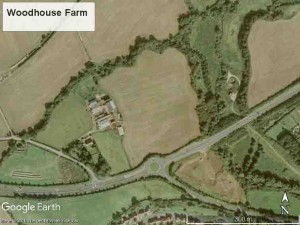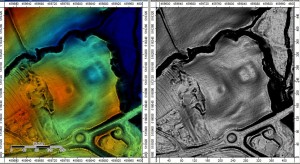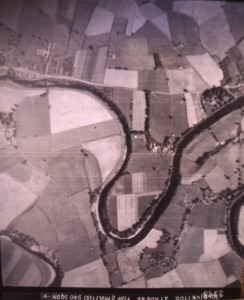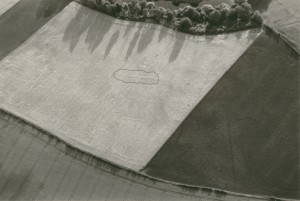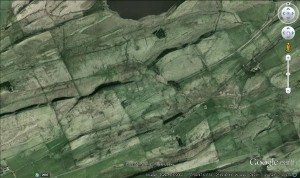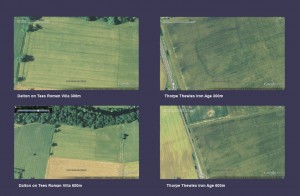What is Archaeology?
“Because archaeology employs a wide range of different procedures, it can be considered to be both a social science and a humanity, and in the United States, it is thought of as a branch of anthropology, although in Europe, it is viewed as a discipline in its own right, or related to other disciplines. For example, much of archaeology in the United Kingdom is considered a part of the study of history, while in France it is considered part of Geology.” (Wikipedia)
Well that’s as clear as mud!
In effect archaeology is just a posh Greek name for what is effectively ‘dabbling around’ in history( a term once used to me in a lighthearted comment to describe my work in finding a Roman villa).
Archaeology can be all things to all men and usually is.
Perhaps I am being a little disingenuous, but how do you separate the metal detectorist(dirty word) who after all is just carrying out geophysical surveying, who finds some coins, records their location, informs the local county archaeologist who then excavates the site and sends the finds off to numerous specialists for analysis. in comparison there is the archaeologist who brings in specialists to carry out geophysical survey, excavates the site, then brings in numerous other specialists to tell him about the geology, the environmental samples, the pottery, the bone, the metalwork, the coins, the glass, the construction materials, illustrate the finds, etc, etc, etc.
The point I am really trying to make is that archaeology is the study of human history, and can be carried out by anybody with an interest in the subject, you don’t need a degree to be an archaeologist, it isn’t an end to end scientific specialism that needs structured training, but a series of core basic skills and organisation, honed by practical experience, which is then backed up by scientific specialisms coming together under the broad brush umbrella of archaeology.
Archaeology has two elements, the scientific analysis of the recovered data that provides us with the valuable bit of archaeology, namely the chronology, application and use of material and artifacts, and the narrative story which in contrast can be anything the imagination can produce. Whilst the story of WW2 archaeology can be near enough completely built up using recorded facts, the further back you go the sketchier the facts become, until you get beyond the Roman period in Britain, when the recorded facts near enough disappear completely , and the narrative becomes 90% pure conjecture.
Getting involved in archaeology and ergo becoming an ‘archaeologist’ is just as achievable as a hobby, but of course to learn and do it well you have to become involved with like minded people with greater experience. First of all you need to establish what level of involvement you want. There are many types of groups and societies available, but many despite the publicity rarely offer practical fieldwork opportunities. Just because a promotional leaflet indicates that that a group or society has carried out fieldwork in the past, doesn’t mean it is still doing it. If practical archaeology is what you want to do, be certain to check they have a current fieldwork group working.
If you want to do serious research archaeology, focus on groups that carry out fieldwork on an ongoing basis, generally within their own resources. Be careful of groups that promote their ‘fieldwork’ on the assumption of a heritage lottery grant funding application in process. These projects are usually funding led rather than research led, and replacing enthusiastic research led endeavour, with paid labour just doing a job, and are usually geared to maximise the archaeological experience for as many members of the community as possible. They rarely offer continuity of opportunity, and often are focused on safe known sites to guarantee results, not exactly the cutting edge of archaeology, but worthy work for those satisfied with limited horizons, and keen to develop their basic skills.
The following is how I would group archaeological interest in the wider community.
Historian/Lecture Archaeologist
Usually principally interested in the historical element of archaeology, often without or at best limited interest in the practical application of fieldwork. These are the majority that usually make up the memberships of local archaeological and historical societies, happy with an annual lecture programme, occasional site visit, and often attracted to the subject from experience of personal historical research in the area of their home community.
Social archaeologist
This group often join local societies with the same general interest in history as the above group, but also want to carry out practical archaeology as well. Many are often surprised when they find the archaeological society they have chosen to join rarely if at all does any fieldwork. I call this group social archaeologists because in my experience their archaeology is but one element of their wider social lives, always badgering to do archaeology, but rarely committing their time to a project, usually making themselves available only for the odd day that fits in with their personal schedule, no matter how exciting the project may be.
With the limited opportunities these days on research projects, it is increasingly difficult to fit this group into planned projects that require a structured volunteer workforce. Opportunities in future for this group may be limited to lottery funded community archaeology projects, which are funding rather than research led. Community archaeology is the current buzzword in archaeology, but in reality it is little more that a renaming of what once traditional fieldwork carried out by societies, universities and local archaeology units etc.
If you only want the occasional day, then focus on projects geared to offering that type of opportunity, because there is nothing more annoying then planning work for 10 people on a verbal committment, and then for only 5 to turn up.
Amateur archaeologists.
The two above groups are all of course amateur archaeologists, however in reality the term really fits those who who are willing to commit their time regularly to a project just like a professional, but unpaid. Most research led groups will rapidly identify the people who are committed, and will offer them the opportunities as they arise. Social archaeologists may well only be invited on the rare occasion that large numbers of volunteers are required.
Research archaeology is about serious commitment.!!

